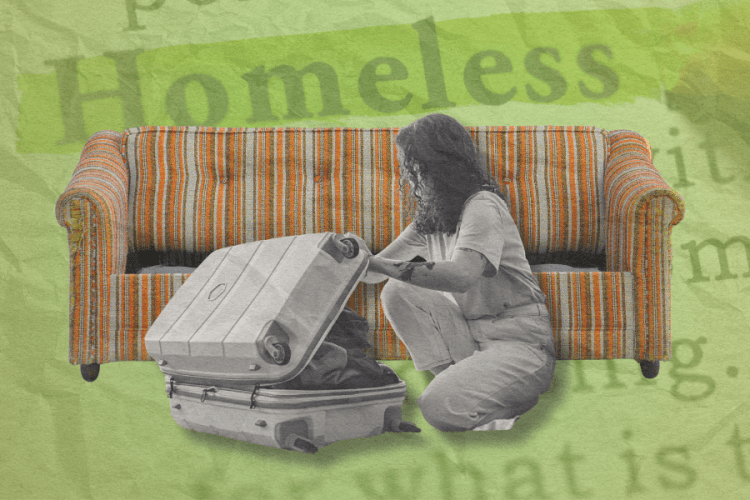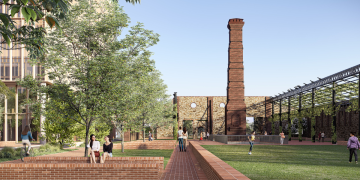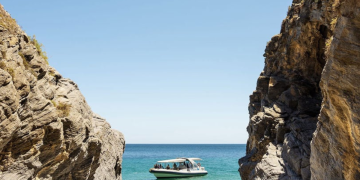More than one in three people who accessed homelessness services in SA last financial year were under the age of 35. From couch surfing uni students, to young mums fleeing domestic violence, here’s what youth homelessness looks like in our state.
When people think of homelessness, they often picture someone older sleeping rough on a park bench. But in reality, people of all ages can experience homelessness, including young people.
Homelessness for young people is often invisible. It’s couch surfing. It’s sleeping in a car. It’s crashing with friends or staying somewhere temporary with no lease, no security, and nowhere else to go.
According to the latest Department of Human Services (DHS) data, more than one in three people who accessed homelessness services in SA last financial year were under 35. That includes 3,457 young people aged 15-24 – around 19 per cent of all clients – and another 19 per cent aged 25-34.
The majority (60 per cent) of the young people supported were female – and some, sadly, were young mums with children fleeing violence.
Ryan Bullivant, Practice Manager of crisis accommodation service Youth110 in Adelaide, explains that the person sitting next to you in your uni lecture might actually be homeless.
“They’re students. They’re working casual jobs. They’re still trying to get to class while figuring out where they’ll sleep,” he says.
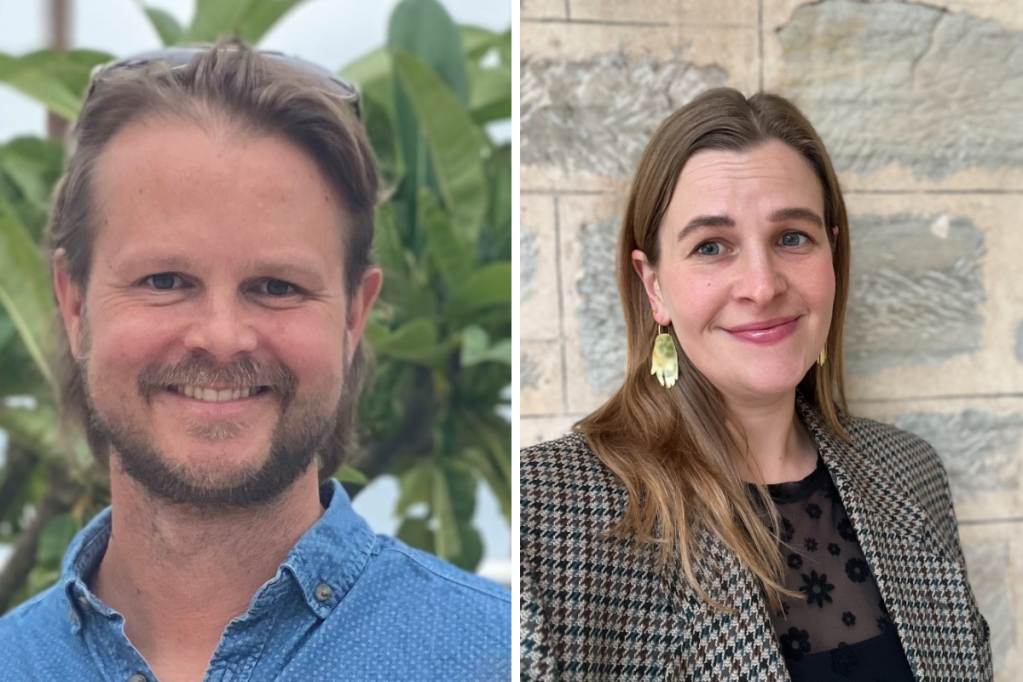
Myths that persist
Despite what the stats show, the old stereotypes persist – that homelessness is a result of bad decisions, moral failings or lack of effort.
“When people see people rough sleeping, they think of stereotypes – like people are lazy,” Lauren Moulds, Director Homelessness Systems & Partnerships at DHS, says. “But these stereotypes are just not true, people who are rough sleeping are often putting tremendous effort in to getting through their days – to stay safe, get food and water and to navigate pathways out of rough sleeping.”
“The biggest myth is that it’s a personal failure. In reality, it’s a systems failure. People can fall through the cracks if the support isn’t there when they need it most.”
Ryan has seen the face of youth homelessness change dramatically over his career.
“When I started 20 years ago, the stereotype was street kids – loud, angry, maybe aggressive,” he says.
“What we see now is sadness, withdrawal, depression. It’s isolation. They’re not bad kids. They’re just sad. They’re grieving the loss of stability and connection.”
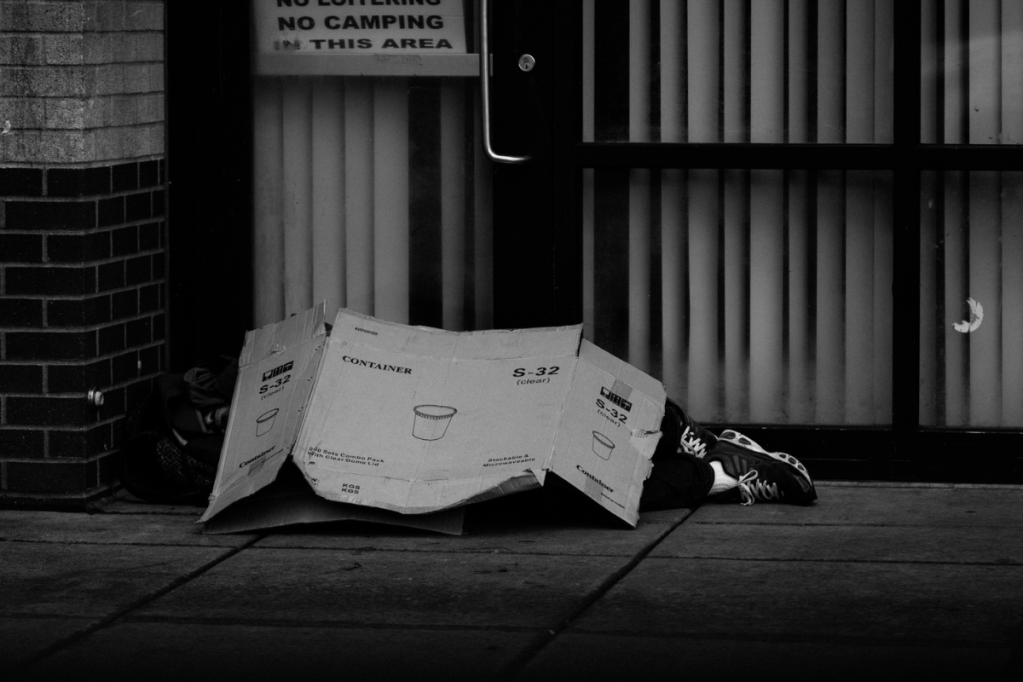
What it feels like
“You lose so much – your routines, your support network, your dignity,” Lauren says. “People lose more than a roof when they lose their home.”
Ryan agrees: “It’s exhausting. It starts to feel like who you are – not just something you’re going through.”
And for many, it’s not just a physical crisis. It’s mental, too. In 2024-25, half of the people who sought homelessness support in South Australia were also experiencing mental health challenges.
It’s a cycle – housing stress fuels anxiety, depression and isolation, which in turn make it even harder to get back on track.
Why it happens
According to DHS, the most common reasons South Australians present for help with homelessness are housing instability (53 per cent) and domestic or family violence (13 per cent).
But behind those stats is a complex mix of challenges: family breakdown, financial stress, mental health challenges, discrimination, and experiences of trauma – including the trauma of experiencing homelessness itself.
“Young people often come to us after a long chain of things going wrong,” says Ryan. “It’s not one thing – it’s everything piling up.”
The current housing challenges make things even harder. “We’ve seen people working full time who still can’t find somewhere to rent or live,” Lauren says.
And Ryan has young people in crisis accommodation who are “ready to move on – but there’s nowhere to move to”.
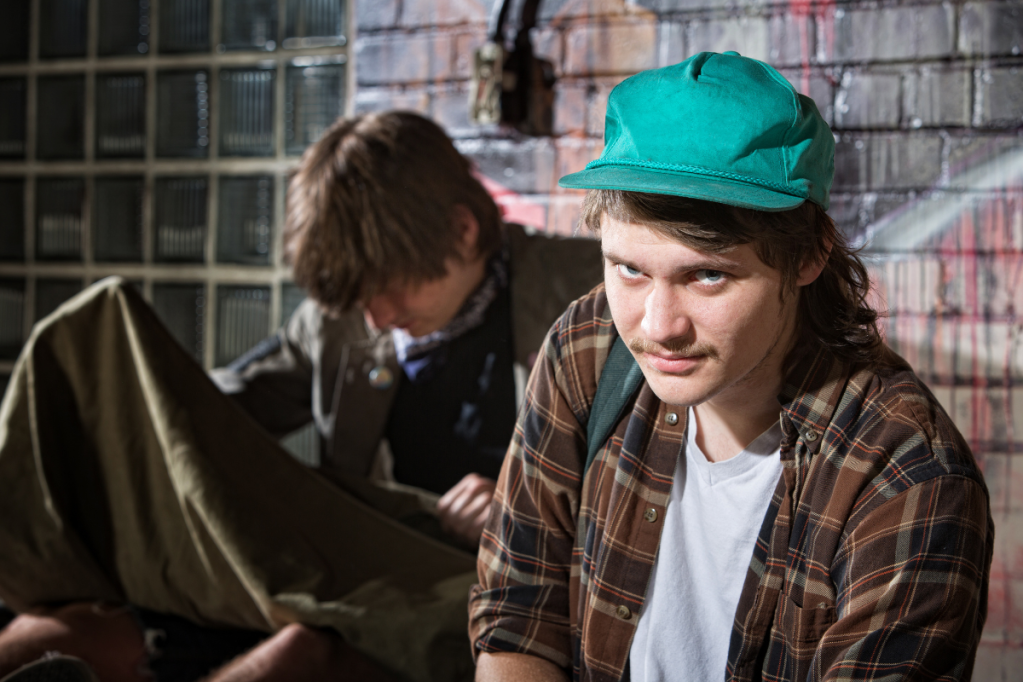
What’s being done
The Department of Human Services (DHS) is rethinking how they tackle homelessness in SA. Their new Outcomes Framework isn’t just about putting a roof over someone’s head – it’s about making sure people actually feel safe, supported and connected.
The goal is to make homelessness rare, short-term, and not something people keep falling back into. It also makes sure that Aboriginal communities are front and centre, with a strong focus on Closing the Gap.
DHS is also planning a full review of its commissioned homelessness services in 2025-26, with a big focus on how the system supports young people. That means looking at what’s working, what’s not, and how services can be more culturally safe, community-led, and trauma-aware. The results will then help shape a better system.
At the same time, the South Australian Government is investing in more than 1,000 new public homes by 2026 through its Housing Roadmap, increasing the amount of public housing in our state for the first time in two decades.
The SA Housing Trust, the biggest housing provider for low-income South Australians, is also helping create more immediate pathways out of housing crisis. It has just completed major renovations on 350 vacant homes to make them liveable again, with tenants now moved into their as-new homes.
What real support looks like
Good support needs services to work together towards the person’s goals. Youth110, funded by the state government and delivered by St John’s Youth Services, offers long-term results. More than 90 per cent of visitors stay only once, with the majority moving into safe, stable homes.
At Youth110, young people get wrap-around support – help with things like Centrelink, job applications, cooking, or mental health care.
“Housing, education, and employment – if you get those three things right, everything else will fall into place,” Ryan explains.
He recalls one young woman who came to Youth110 directly from a mental health ward. She took time to stabilise – and then went on to land a full-time corporate job.
“That’s what happens when you give someone space to recover and build their confidence with the right help,” he says.
Youth110 is part of a broader state-funded system of homelessness support. In 2024-25, the South Australian Government invested over $18 million in youth homelessness services.
DHS supports this system through five regional Homelessness Alliances and a network of directly contracted services. Together, these specialist providers help young people access crisis accommodation, transitional housing, case management, and the support they need to build a future.
Lauren says supports work best when there is a level of coordination so that it becomes easier and more streamlined for people to manage.
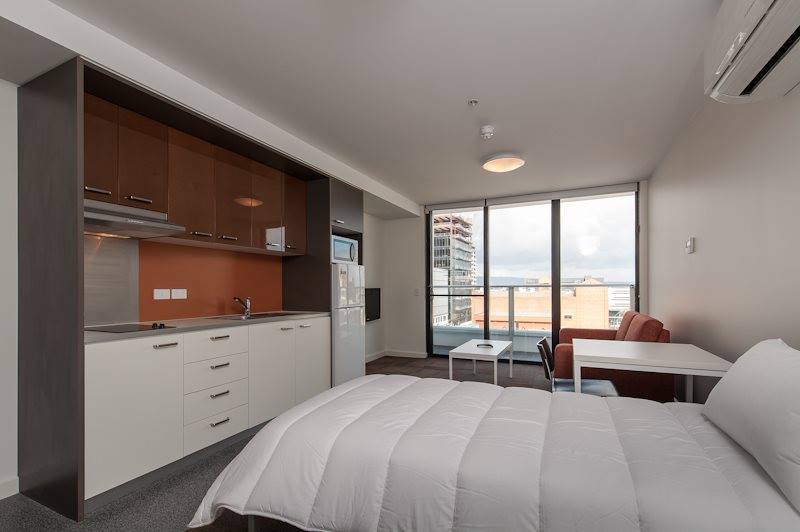
When the weather turns dangerous
For people sleeping rough, extreme weather isn’t just uncomfortable – it can be life-threatening.
That’s why the state government activates Code Red during heatwaves and Code Blue when temperatures drop dangerously low. These alerts trigger extra support: things like temporary overnight accommodation, hot meals, outreach worker check-ins, and supplies like blankets or sunscreen.
“It really does save lives,” says Lauren. “But it also gives people dignity – a place to warm up, get a hot meal, have a shower, even just feel human again.”
Anyone can sign up for alerts on the DHS website, and frontline workers use the info to help connect people with urgent support.
It could happen to anyone
According to Lauren, about 56 per cent of Australians are only just making ends meet – and potentially just one pay cheque away from homelessness.
“It really could happen to anyone – relationships change, financial positions change and sometimes all it takes is one thing going wrong,” she says.
“Homelessness doesn’t discriminate,” Ryan adds. “Anyone can find themselves in that situation – especially young people who don’t have savings, stable work, or family to fall back on.”
“We’ve supported people who were doing everything right – studying, working casual jobs, trying their best – and still ended up without a home.”
That’s why our state’s homelessness services matter so much. They’re there to catch people before they fall further.
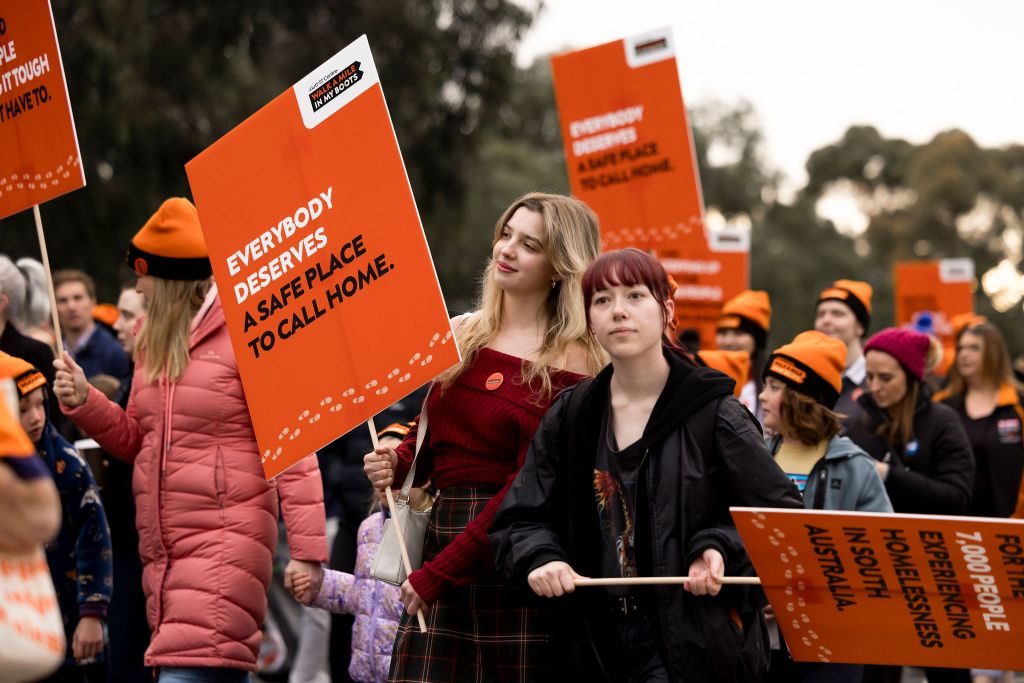
Homelessness Week 2025
Homelessness Week (4-10 August) – hosted by Homelessness Australia – is a time to raise awareness, challenge stereotypes, and support action on homelessness. This year’s theme – “Homelessness Action Now”– is a call to better understand the issue and do something about it.
In Adelaide, here are a few of the ways to get involved – all happening this Friday, 8 August:
- Walk a Mile in My Boots: Walk through Victoria Park/Pakapakanthi to show solidarity with the thousands of South Australians without a safe place to call home.
- Foundry After Dark – SALA Exhibition: A youth art exhibition hosted by SYC, spotlighting the creativity and resilience of young people who’ve experienced homelessness.
- Annual Memorial Service: A free, public service to be held at 1pm in Victoria Square/Tarntanyangga to remember those who have died while experiencing homelessness. Everyone is welcome.
To find out about more local events, visit Homelessness Australia’s website.
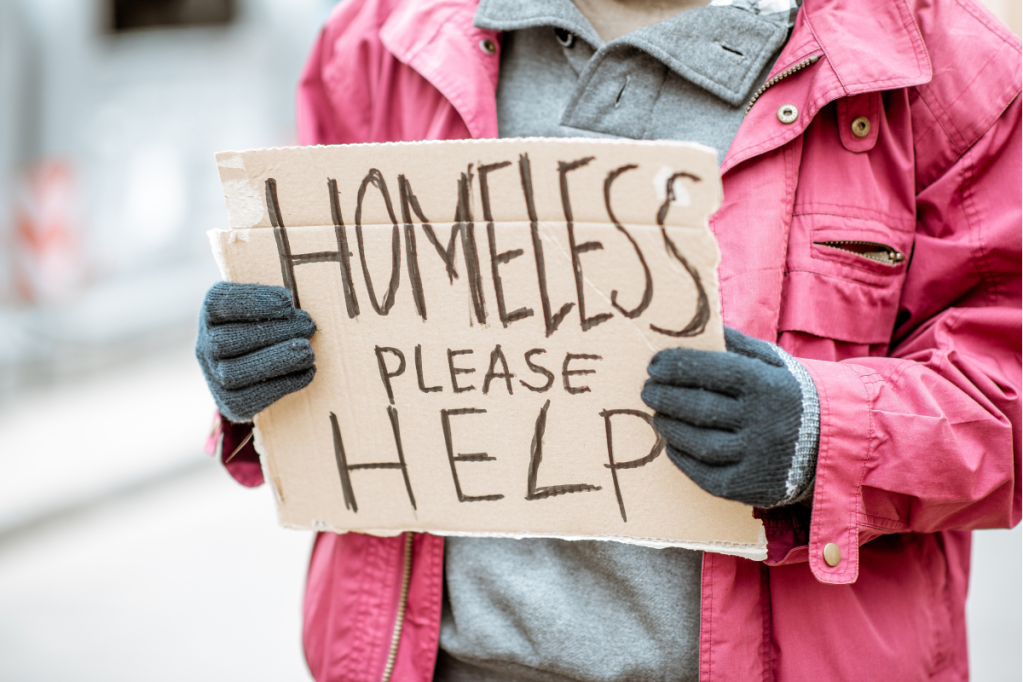
What you can do – all year round
Remember, people experiencing homelessness are just that – people.
“Rough sleepers don’t need to be moved on,” Ryan says. “They need to be seen. Just make eye contact. Say hi. A smile can make their day.”
You can also:
- Encourage them to ring Homeless Connect on 1800 003 308 so they can access the support they need.
- Use Street Connect if you see someone sleeping rough in the city. It alerts trained outreach workers who can check in and offer support.
- Donate to a local youth homelessness service – cash is better than goods. Services like Youth110 take young people shopping for their own essentials, giving them dignity and ownership.
- Volunteer your time or skills. Local services often need support with hands-on help, admin, fundraising, mentoring, or simply spreading the word.
Need help or know someone who does?
Homeless Connect SA – 1800 003 308
24/7 hotline for crisis accommodation and support. Call anytime if you’re experiencing homelessness or when at risk. Free from landlines.
Toward Home Alliance – 1800 809 273
A homelessness support phone service for people in Adelaide, the South, and Hills regions (Mon-Fri, 9am-5pm).
Ask Izzy
An online directory of services – including housing, meals, health and counselling – based on your location.
Pickle
A South Australian app made for young people to find nearby homelessness support, fast.


